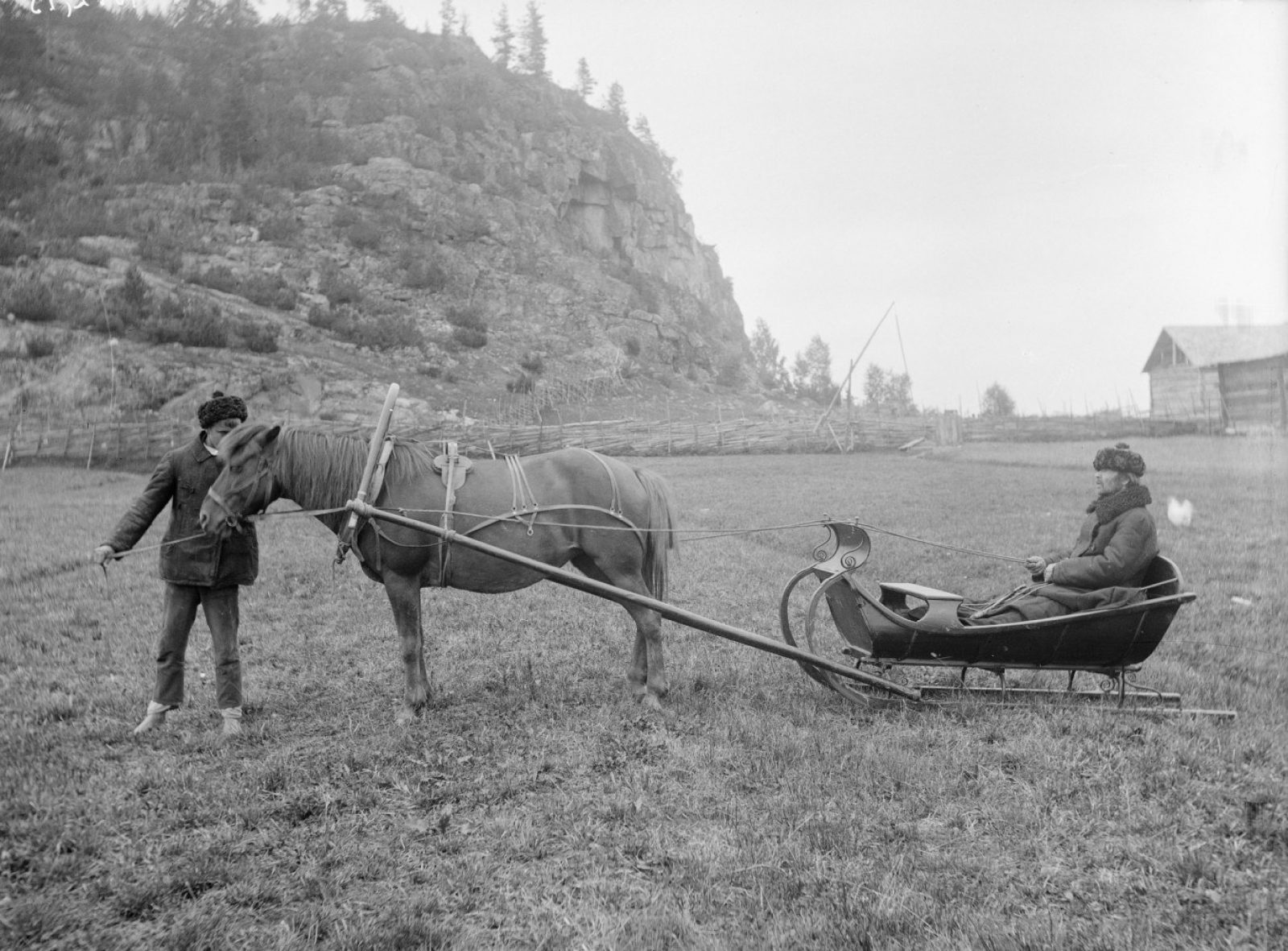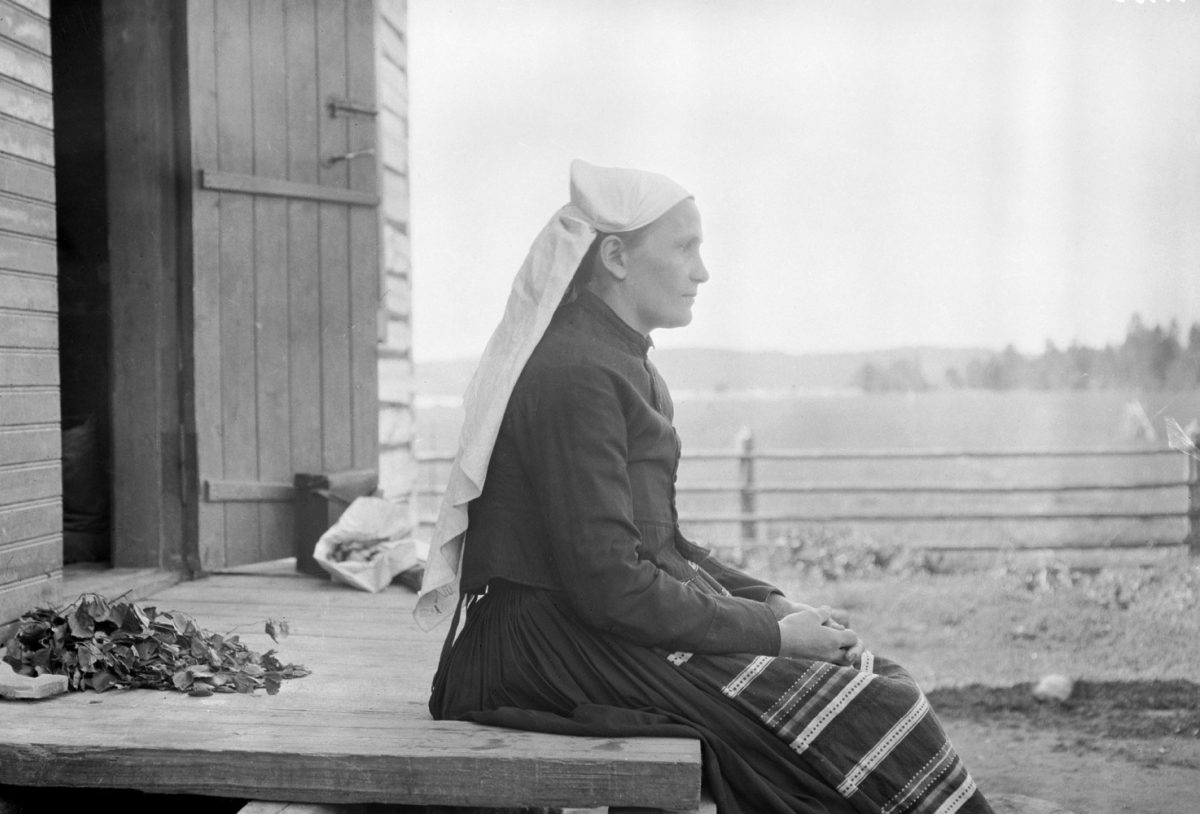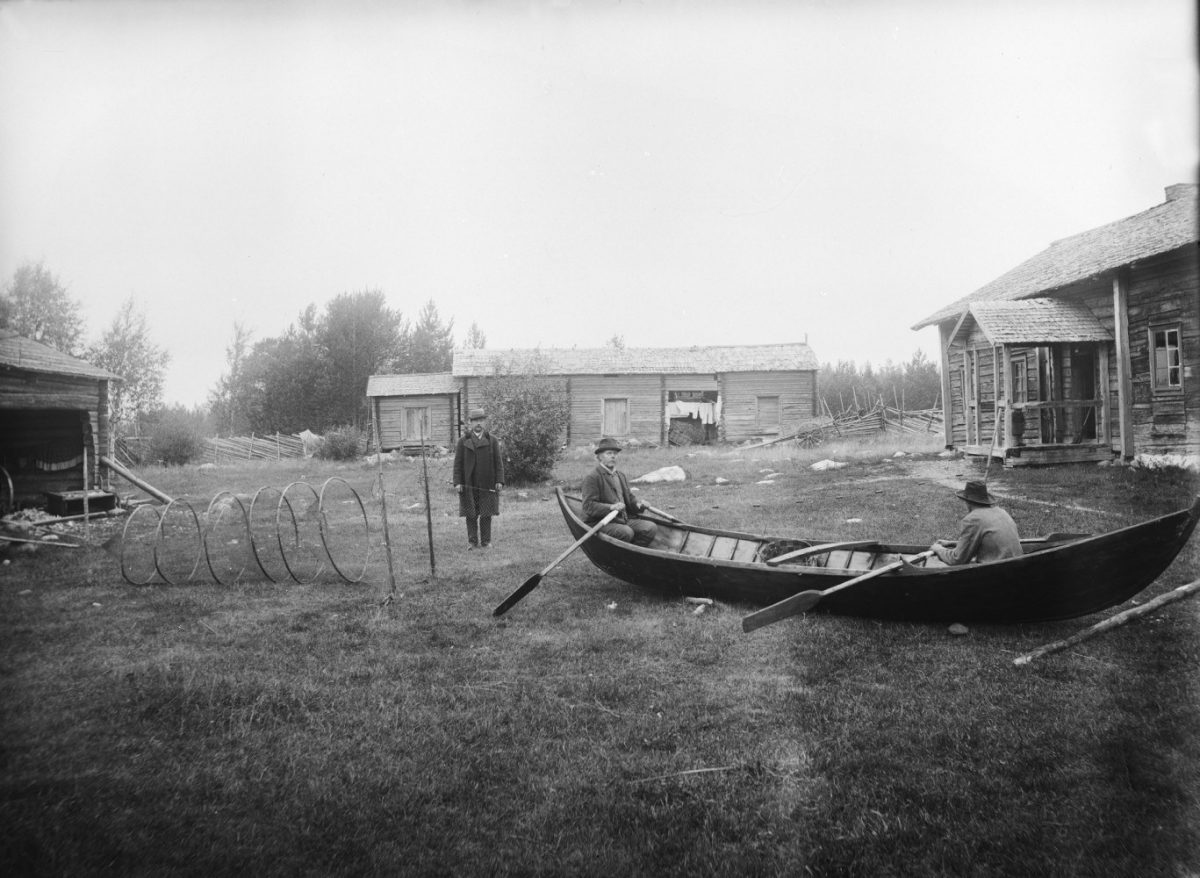
New perspectives by U T Sirelius
A distinguished ethnologist, Sirelius travelled extensively in Finland and related regions.
Uuno Taavi Sirelius (1872–1929) was the first professor of Finno-Ugric ethnology at the University of Helsinki. He became well-known for his research into dam fishing, national costumes and ryijy tapestries. At a 1923 meeting of the Archaeology and Ancient History Committee, Sirelius called for modern tools and techniques to be used to record Finnish folk culture. He demanded funding for “a systematic undertaking to record the collective and soon vanishing memories of our people by methods of note taking, drawing, photography and phonography.”
After this meeting, the work of recording Finland’s disappearing customs came underway with a series of joint field trips conducted by the National Museum and scholarly societies. In 1925, Sirelius led the inaugural expedition to Hauho in southern Finland. In Hauho, his scholarship focused on buildings and farm layouts. Sirelius had a strong and determined personality. His total commitment to achieving his objectives is reflected in the way he approached photography. As authenticity was not his aim, he was happy to set up scenes to suit his ends. What he wanted was to record visual proof of an item and its practical use, not to capture an activity in a live situation. This meant that during his June visit to Hauho, Sirelius photographed the Yli-Maunula farmhouse festooned with Christmas decorations. Kustaa Vilkuna, a Finnish ethnologist and linguist who accompanied Sirelius on the trip, spoke of how he’d been forced to take down an entire stack of firewood piled up against the wall of a sauna building, because Sirelius wanted a photograph that would show the sauna’s small window.
Sirelius’s photographs featuring national costumes and other forms of traditional dress are almost all staged, so much so that you can actually see the catalogue number on the veil worn by a woman from Jääski. Sirelius was in the habit of bringing items of clothing from the National Museum’s collection to their location of origin in order to illustrate their intended use.
Sirelius also conducted research expeditions to study the Ob-Ugrians. During these journeys he also took numerous photographs which were accompanied by extensive and detailed notes. He would develop the photographs while still out in the field, but the challenging circumstances tended to lead to errors. “It is damnably difficult working on board a ship that is not merely cramped but also beset by heat, dust, mosquitoes and wind,” he complained. Most of his photographs feature inanimate objects as his camera and plates simply did not lend themselves to action shots. His is the first extensive Finnish collection of photographs depicting the Ugrian people.
From a photographic standpoint, visits to the Perm region in Russia were extremely challenging. Due to the locals’ attitudes towards photography, portraits were often only possible after lengthy cajoling or even bribery. In line with anthropological convention, Sirelius would typically take two shots, one with the subject facing the camera and the other side on. Even documenting the buildings proved difficult. Sirelius’s preference for older buildings led the Udmurts to believe that he would show the photographs to the tsar as evidence of the locals’ alcohol-fuelled degeneracy.
Meanwhile, for U T Sirelius, these photographs were evidence of a material culture. He often used the photographs as background material for his own drawn illustrations, which allowed any unnecessary elements to be eliminated. U T Sirelius’s photographs form part of the Finnish Heritage Agency’s Picture Collections and are available to view online at www.finna.fi and www.museovirasto.finna.fi.
Text: Jaana Onatsu
Kamera 5/2023

A Jääski woman wearing a veil, 1914. Photo: U. T. Sirelius / Finnish Heritage Agency’s picture collections.

Boat and fyke net, possibly in Kuusamo, pre-1908. Photo: U. T. Sirelius / Finnish Heritage Agency’s picture collections.